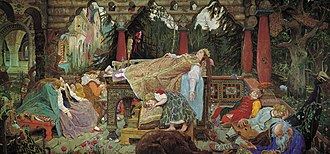Neuroscience of sleep
Sleep Stages and Brain Activity: – Rapid eye movement sleep (REM) and non-rapid eye movement sleep (NREM) are major modes of consciousness. – NREM sleep […]
Sleep Stages and Brain Activity:
– Rapid eye movement sleep (REM) and non-rapid eye movement sleep (NREM) are major modes of consciousness.
– NREM sleep is divided into stages N1, N2, and N3, each with unique EEG patterns.
– Sleep cycles progress in 90-minute cycles of REM and NREM, with body activity slowing down.
– Brain waves slow down during sleep, and neurotransmitter availability changes.
– EEG waveforms show brain activity patterns during sleep, with deep sleep occurring early in the night and more REM before waking.
Evolution and Development of Sleep:
– Sleep evolution is influenced by factors like body size, metabolic rate, predation, and food sources.
– Different organisms exhibit varied sleep patterns shaped by evolutionary pressures.
– Sleep in infants, adolescents, and the elderly undergoes changes influenced by hormonal and societal factors.
– Understanding the evolution of sleep in animals and humans is crucial for studying sleep functions and risks.
– Comparative studies in different species help in understanding the evolution of sleep mechanisms.
Neuroscience of Sleep and Sleep Disorders:
– REM sleep evolution is linked to the tonic immobility reflex, showing brainstem control and paralysis.
– Sleep mechanisms integrate earlier findings into an evolutionary framework for understanding long-term plasticity.
– Older adults experience changes in sleep architecture and circadian rhythms, leading to sleep disturbances.
– Decline in slow wave sleep is linked to memory consolidation impairments, and atrophy in the brain predicts disruptions in sleep and memory.
– Research is ongoing to identify causes of sleep changes in aging and reduce related risks, including neurodegenerative disorders.
Sleep Physiology and Activity Patterns:
– NREM sleep constitutes ~80% of all sleep in adults, with distinct characteristics in stages N1, N2, and N3.
– REM sleep constitutes 20-25% of total sleep in adults and is characterized by muscle paralysis and high-frequency EEG waves.
– Ponto-geniculo-occipital (PGO) waves related to REM sleep represent dream content and may aid in brain development.
– Network reactivation during sleep aids in memory consolidation, with structured interactions between hippocampus and neocortex.
– Thalamus and ascending reticular activating system play critical roles in sleep regulation, generating sleep spindles and modulating neural subsystems during sleep onset.
Historical Development and Sleep Regulation:
– The stages of sleep were first described in 1937 and standardized in 1968, with revisions in 2004.
– Sleep regulation controls transitions between sleep and wakefulness, with brain regions like the thalamus and hypothalamus playing key roles.
– The thalamus generates delta and slow oscillations in slow-wave sleep, synchronizing neuronal firing with the cortex.
– The ascending reticular activating system modulates responses during wakefulness and is inhibited by GABAergic neurons during NREM sleep.
– Sleep onset arises from the anterior hypothalamus activation, producing inhibitory neurotransmitters like GABA.
The neuroscience of sleep is the study of the neuroscientific and physiological basis of the nature of sleep and its functions. Traditionally, sleep has been studied as part of psychology and medicine. The study of sleep from a neuroscience perspective grew to prominence with advances in technology and the proliferation of neuroscience research from the second half of the twentieth century.

The importance of sleep is demonstrated by the fact that organisms daily spend hours of their time in sleep, and that sleep deprivation can have disastrous effects ultimately leading to death in animals. For a phenomenon so important, the purposes and mechanisms of sleep are only partially understood, so much so that as recently as the late 1990s it was quipped: "The only known function of sleep is to cure sleepiness". However, the development of improved imaging techniques like EEG, PET and fMRI, along with high computational power have led to an increasingly greater understanding of the mechanisms underlying sleep.
The fundamental questions in the neuroscientific study of sleep are:
- What are the correlates of sleep i.e. what are the minimal set of events that could confirm that the organism is sleeping?
- How is sleep triggered and regulated by the brain and the nervous system?
- What happens in the brain during sleep?
- How can we understand sleep function based on physiological changes in the brain?
- What causes various sleep disorders and how can they be treated?
Other areas of modern neuroscience sleep research include the evolution of sleep, sleep during development and aging, animal sleep, mechanism of effects of drugs on sleep, dreams and nightmares, and stages of arousal between sleep and wakefulness.